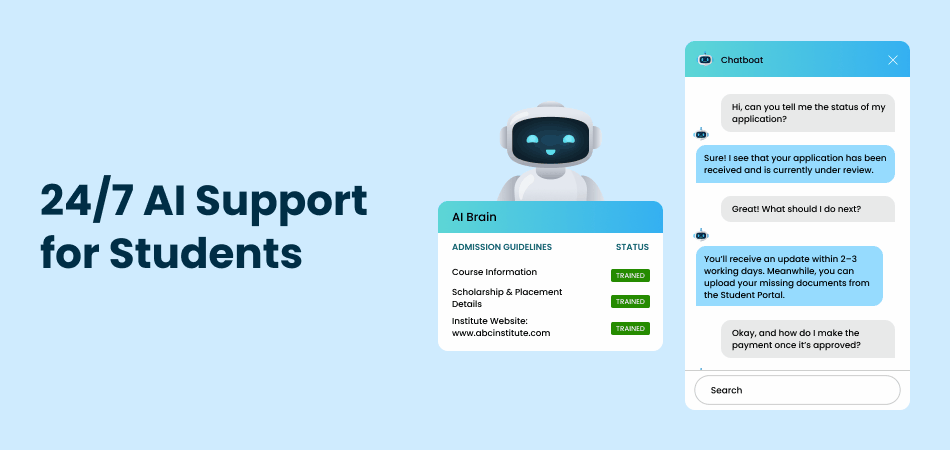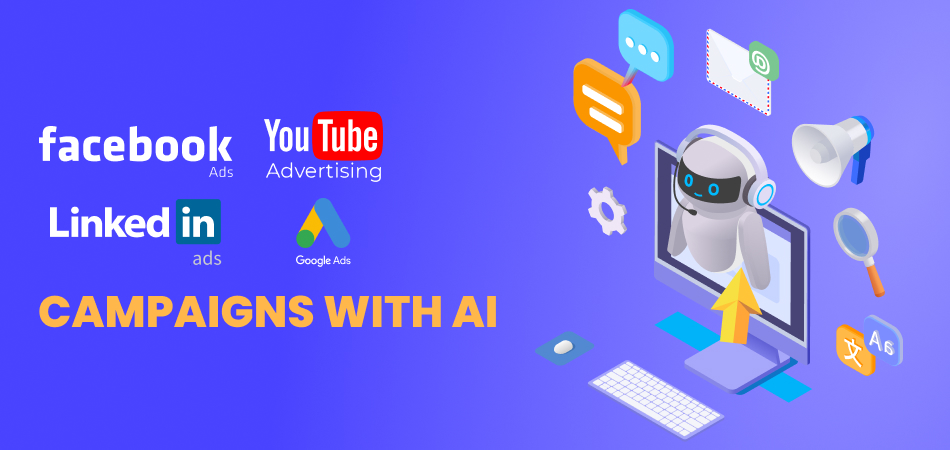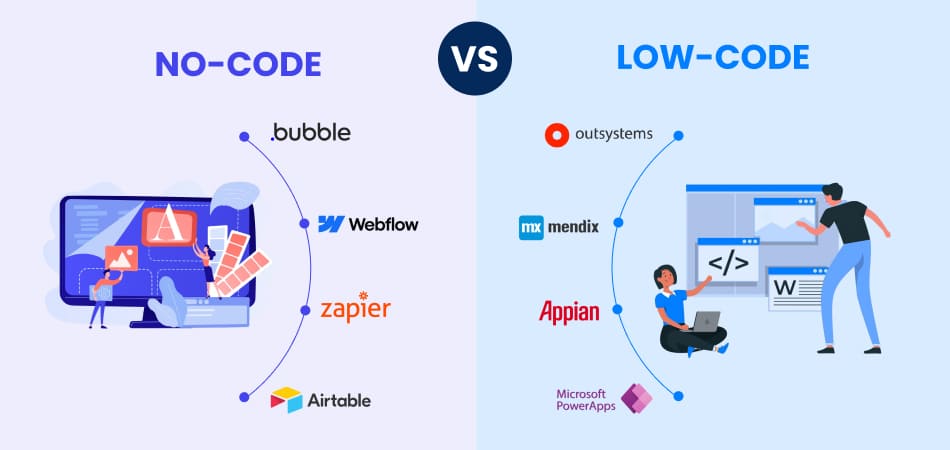As we become more reliant on technology, the importance of usability and accessibility increases every day. This is where User Interface (UI) and User experience (UX) come into play. In web and mobile app development, UI and UX rank first and are building blocks for creating intuitive design.
UI is the first point of contact between the user and the app or website. It is the graphical layout of an app or website, including buttons, icons, colors, typography, and other visual elements. The main goal of UI is to create an aesthetically pleasing and user-friendly interface that allows users to interact easily with the app or website.
On the other hand, UX is concerned with the overall experience a user has while interacting with an app or website. It includes the user’s emotions, attitudes, and perceptions about the app or website. UX designers focus on making the user’s journey smooth and enjoyable by designing a user flow that is intuitive and easy to navigate.
In the development industry, designers play a crucial role in creating the UI and UX of an app or website. They work in collaboration with developers to ensure that the design is not only aesthetically pleasing but also functional and user-friendly.
The benefits of a good UI/UX design cannot be overstated. A well-designed app or website can attract more users, increase user engagement, and ultimately lead to higher conversion rates. Users are more likely to return to an app or website that offers a seamless and enjoyable experience. Through this blog, we uncover the basic introduction of UI and UX, designers’ roles, and benefits.
Let’s start with defining- UI and UX.
What is UI?
UI or User Interface serves as the bridge between users and an app or a site, encompassing elements that users interact with like CTAs, text, images, and navigation menu.
UI focuses on creating authentic, unique, and aesthically pleasing interfaces that encourage seamless user interaction. Principles of visual hierarchy, typography, color theory, and spacing are put to use by UI designers to enhance usability and guide users through the desired actions or tasks.
A well-crafted UI not only delights users with its visual appeal but also prioritizes clarity and efficiency in navigation and interaction. Ultimately, UI design plays a potent role in shaping user perceptions and experiences, influencing everything from initial impressions to long-term engagement with an app or website.
What is UX?
UX or User Experience can be defined as any interaction a user goes through whether via an app or a website. The concept of UX goes beyond aesthetics and is vastly different from that of UI. User experience focuses more on the user’s experience and thus caters to features that are of primary importance such as usability, accessibility, and overall satisfaction.
In layman’s language, UX design is about understanding a user’s journey, from the sign-up to the completion of tasks.
UX designers can gain insights into user behavior and needs through extensive research which includes usability testing and analytics. The outcome after research guides UX designers to create wireframes, prototypes, and final designs that prioritize functionality and user satisfaction.
A successful UX design anticipates user needs, minimizes friction in the user journey, and eventually transforms the digital experience into a delightful and purposeful interaction.
Main Difference Between UI and UX
Building a product whether an app or a website requires- UI and UX. They are both separate concepts yet similar and necessary to complement one another. We give you the main differences between UI and UX in the detailed table below.
| Aspect | User Interface (UI) | User Experience (UX) |
| Focus | Visual representation of a product. | Overall user navigation journey to drive maximum satisfaction. |
| Vital Components | Layout of a site or an app, typography, color schemes, CTAs, navigation menus, and interactive elements. | Uncomplicated information architecture, error-free user flows, usability testing, and emotional response of users. |
| Purpose | To create a visually appealing and intuitive interface. | Optimization of overall user experience by prioritizing ease of use, proficiency, and enjoyment. |
| Design Approach | Significance of the app or site aesthetic and usability. | To ensure the user’s entire app or site journey remains as flawless as possible. |
| Design Method | Visual hierarchy is at the topmost priority, along with consistency, feedback mechanism, and usability principle. | Extensive research, user testing, prototyping, and iterative design processes. |
| Goal | To enhance user engagement levels and usability of the product. | In UX, the prime goal is to align the product with users’ needs to guarantee loyalty. |
| Key Principles | Precision, simplicity, transparency, consistency, and interactivity. | Trouble-free usability, accessibility, desirability, and emotional appeal. |
To understand the concept of UI and UX in a better and more thorough manner, we must know what a UI and UX designer do.
Job Role of a UX Designer
The majority of everyday tasks of a User Experience (UX) Designer depend on the length and requirements of a project. Tasks can include anything from market research to data analysis to designing mockups. The task allocation also relies on the experience of a UX designer.
However, there are certain regular tasks that almost every UX designer is responsible for, such as:
- Creating Information Architecture: This is the most significant step, it helps ensure that the information is delivered in the correct order.
- Designing Wireframes: Crafting wireframes ensures that all elements are accounted for any app or site page or screen.
- Writing of Microcopy Text: This is another regular task in the life of a UX designer, this helps users understand what to expect and accomplish.
- User Research: This involves conducting user interviews and surveys to have a glimpse of their wants and needs.
- Data Analyzation: After user research has been conducted, the UX designer analyzes data to identify patterns and insights.
- Creation of User Personas: User personas help UX designers build products according to the choices and needs of different personalities. They are created based on data gathered during UX research.
- Creation of User Flow: A user flow chart shows different steps a user will take to complete a task. A UX designer is responsible for creating a flawless user flow for an app or a site. User flow also helps to understand a user’s journey in a better light.
- Creation of Prototypes and Mockups: Prototypes and mockups are built to test the visual representation and user journey of a product.
Job Role of a UI Designer
A User Interface (UI) Designer plays a pivotal role in shaping the visual and interactive elements of an app or a website. The prime role of a UX designer is to create and work on elements that enhance navigation and the entire product journey.
Here’s a detailed overview of a UX designer’s everyday tasks:
- Formation of Visual Design: A UI designer is responsible for building stunning interfaces that look appealing to users and enhance their overall experience. Elements that are salient in visual design are typography, color palettes, icons, and imagery to align with a business or a brand identity.
- Layout Optimization: A UI designer analyzes and optimizes a product layout to ensure transparency and ease of navigation. Certain factors are taken into consideration like spatial relationships, information hierarchy, and user flow to create layouts that guide users.
- Interactive Element Design: The UI designer is responsible for creating elements that are not only visually appealing but also functional and responsive, enhancing the overall usability of the interface.
- Prototyping and Wireframing: Another regular task for a UI designer is to develop wireframing tools to create mockups and interface prototype designs. These prototypes are significant as they represent how the final product will look, allowing for more iterative testing and refinement.
- User Research and Analysis: Just like User Experience, UI designers also conduct user research to know users’ behavior, market trends, and opportunities for improvement in interface design.
- Industry Trends: For a UI designer, it’s important to stay updated with industry trends. You increase your skills and knowledge by continuously learning about the latest trends.
Key 5 Benefits of User Interface (UI)
Now that you know what UI is and the role of a UI designer, the next thing for you is to understand its advantages. Below are five key benefits of UI:
- Boosts Users Overall Experience
Enhancement of user experience is the primary benefit of investing in UI. A well-crafted UI takes user needs, preferences, and behavior into consideration to come up with interfaces that are intuitive and easy to navigate.
By incorporating a seamless navigation menu, buttons, flawless layout, structure, and appealing interactive elements, UI designers ensure that users interact with the product readily, which leads to higher levels of satisfaction and engagement.
- Advances Usability
UI design elevates the usability of digital product interfaces, making it super-easy for users to complete tasks and achieve their goals. UI designers reduce cognitive load and streamline user interactions by thoughtful placement of fonts, forms, buttons, and other interactive elements.
Consistent design patterns in UI help users to understand navigation patterns which diminishes frustration and increases efficiency. When users know what they are supposed to do with an app or what might come next, or when they easily access a certain feature, they are less likely to leave an app or site.
Good UI can be the differentiator between a good e-commerce business and a failing business, many times businesses fail to understand the real problem even though it’s right in front of their eyes. All big e-commerce businesses have good and engaging UI, making the user journey smooth. When combined with skillfully done UX, even the highest user expectations are met.
- Helps to Maintain Consistent Brand Identity
It takes months, sometimes years for a business to establish itself as a brand. To stay relevant and hold a brand’s position tight, businesses usually opt to launch a site or a mobile app. When that happens, there are two possibilities either your business flourishes or depletes. And UI plays a substantial role in both outcomes.
Sturdy and engaging UI never disappoints users on a large scale and also acts as a stepping stool in expanding brand identity. By hiring a good UI design agency, you’ll be doing a favor and a valuable investment for your business’s future growth.
UI designers can reinforce brand recognition and strengthen user loyalty by incorporating captivating brand colors, typography, and eye-catching imagery. Plus, consistency makes users feel familiar with a product, building trust and credibility over time.
- Higher Conversion Rates
Conversion rate is a leading priority for businesses. UI influences conversion rate by optimizing essential user touchpoints and call-to-action within the interface. Moreover, strategic and impressive placement of buttons, fonts, and persuasive messaging, can guide users through the conversation tunnel and encourage desired actions. Clear and visually appealing UI elements promote users’ confidence in your business and aid in reducing friction during the conversion process.
- Fosters Elevated User Engagement
Engaging UI elements like animations, micro-interactions, and visual feedback mechanisms enhance user engagement. Thoughtfully designed UI elements not only capture users’ attention but also encourage them to interact more deeply with the interface. By providing delightful and memorable experiences, UI design stimulates user curiosity and encourages exploration, leading to a longer engagement period and heightened retention rates.
Key Benefits of User Experience (UX)
- Enhanced User Satisfaction
The primary goal of UX design is to create experiences that resonate with users and meet their needs. By conducting extensive user research and understanding user behaviors and preferences, UX designers can custom-build the design of an app or a site to align with user expectations. This emphasis on user-centric design increases user satisfaction as users find the product intuitive, easy to use, and aligned with their goals.
- Improved Business Outcomes
When you invest in UX design, it leads to overall business growth and bigger profitability. By keeping user needs a priority and delivering compelling experiences, UX designers drive higher rates of user engagement, conversion rates, and customer satisfaction metrics. Additionally, user-centric design can drastically decrease customer support budget and customer service inquiries by preemptively addressing user issues and concerns. Overall, UX design directly impacts revenue growth and fosters sustainable business success.
Endnote
UI and UX are two essential components in the development of a digital product. Although they share similar qualities, designers must understand their distinction. UI and UX work together to create amazing interfaces that improve the user experience.
If you run a business and are unfamiliar with these concepts, you can contact us for a free consultation by sending an email request. Our experienced developers can guide you through the requirements of UI and UX for website and app development.



